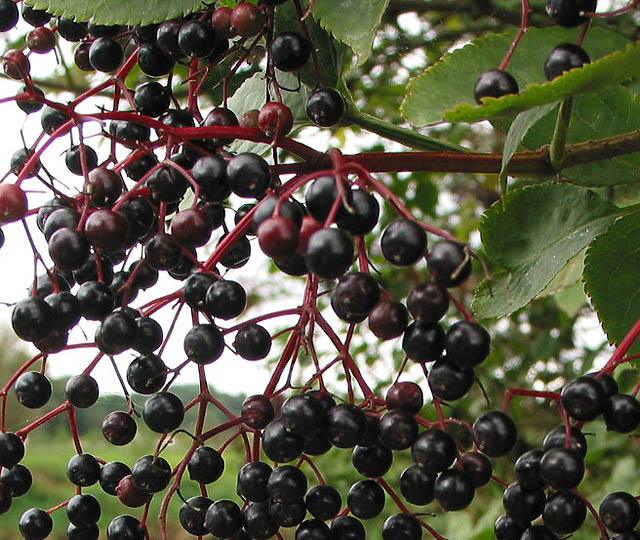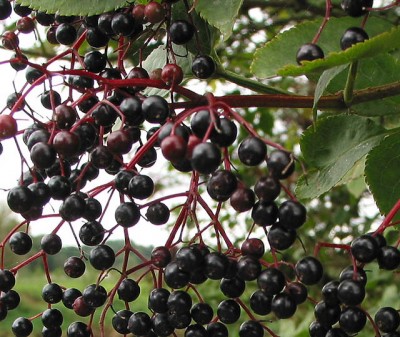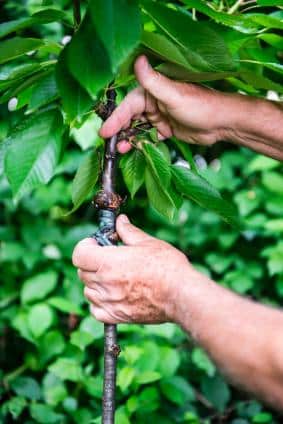Summer is a great time to gather wild plants to eat and store for winter health. Gathering can be a terrific family activity as well.
Raspberry, blueberry, strawberry and blackberry are abundant in many locales. All yield tasty berries and leaves for flavorful teas. Berries are among nature’s most nutrient dense foods.
- Raspberry is used in many blends to promote women’s health. It is a gentle herb that is beneficial for everyone. Raspberry is a source of calcium, iron, and vitamin C.
- Blueberries are antioxidant powerhouses used to promote eye and urinary health. They help to strengthen the veins and benefit the entire circulatory system.
- Strawberries are rich in vitamins. The leaves can be dried and added to teas in winter. They are excellent in blends for children.
- Blackberries are a complete medicine chest. The berries are nutritious. Like all berries, blackberries are high in fiber and antioxidants. I use the astringent leaves or roots to make a tea to reduce the frequency of loose stools.
Try adding any of these berries and the leaves of raspberry or strawberry to herbal iced tea blends. Muddle the fruit and leaves first. Muddling means crush. This will release the juices and flavors, adding lovely color and a mouth full of summer.
Many of the summer weeds make excellent herbal remedies. Gather leaves and flowers between 10 a.m. and 2 p.m. The dew will be dried and the essential healing oils will be at their peak.
Joe Pye weed (Eupatorium purpurea) has beautiful, showy mauve-colored flowers in late summer. In the past, Joe Pye weed was used extensively to induce sweating and alleviate fever from typhus. Pye was historically used to relieve gall bladder and urinary ills. I consider it to be one of the best herbs to treat kidney stones and as a diuretic. It is a urinary system tonic. I use it in formulas to relieve cystitis. Joe Pye weed has also been used to treat arthritis and gout. Current European studies show that Joe Pye contains immunity boosting constituents.
Learn How To Make Your Own Emergency Remedies For Use In Any Survival Situation …
Yesterday, I was walking through a field. My nose was a bit stuffy, so I picked and nibbled on a couple of goldenrod (Solidago) leaves. Within 20 minutes, I felt better. There are hundreds of species of goldenrod. Some taste better than others. My favorite goldenrod is the “Sweet Goldenrod.” It really does have a sweet, aromatic flavor.
The poor goldenrod, with its glorious yellow tops, is often blamed for causing hay fever. It is innocent. The more likely culprit is the less showy ragweed that often grows alongside the goldenrod. I am always reassured to see that there is a power that knew enough to put the “cure” right next to the culprit. Goldenrod is also useful for urinary tract ills.
Yarrow is a terrific example of traditional wisdom about using herbs for healing. It is found on all continents of the northern hemisphere. Diverse societies have used yarrow for millennia to promote healing. People that have had no known interaction with each other all use yarrow for similar healing purposes.
As is frequently the case, traditional herbal uses are authenticated by current practices. Yarrow was found in a Neanderthal gravesite from 60,000 years ago. Its scientific name is Achillea millefolium. The name Achillea is said to have originated from mythical ancient Greece. The bleeding of Achilles’ wounded tendon is said to have been staunched with yarrow. Achillea has been used to control bleeding during many battles including the American Civil War. Native Americans used Achillea extensively. The plant was used as a medicine chest for the treatment of chicken pox to fevers and tuberculosis.
Mullein is a tall plant with velvety leaves and small yellow flowers. The flowers can be made into an oil to relieve earaches. The leaves and root are relaxing. They have expectorant actions and relieve coughs.
Elderberries and elderflowers can be gathered. The berries should not be used raw. Cook or dry them for safe use. Several studies show that elderberries promote immune health. I use them in blends to relieve colds and flu. Tasty teas and fritters may be made from the flowers.
Weedy-looking mugwort can be gathered and dried. The dried herb can be made into small pillows. It is said to promote dreams.
Cleavers, plantain, and chickweed are small plants that possess healing properties. They all promote healing of ulcers, wounds, and irritated skin.
Yellow St. Johnswort flowers can be identified easily. They stain your fingers maroon when picking. St. Johnswort is famous as a remedy to treat depression. It has antiviral properties as well. St. Johnswort can be made into a beautiful oil that relieves nerve pain.
These are just a few of the abundant plants that you can gather and use for health. Always obtain landowner permission before gathering. Gather in clean areas. Be certain when identifying plants. Only gather plants that are abundant. And most of all, always check with your doctor or other healthcare practitioner before starting any kind of treatment.











